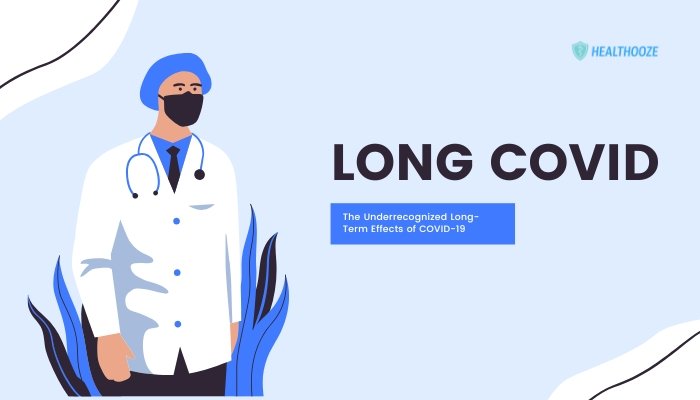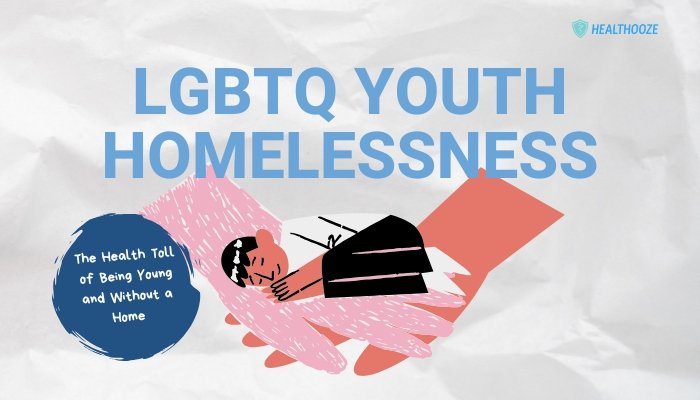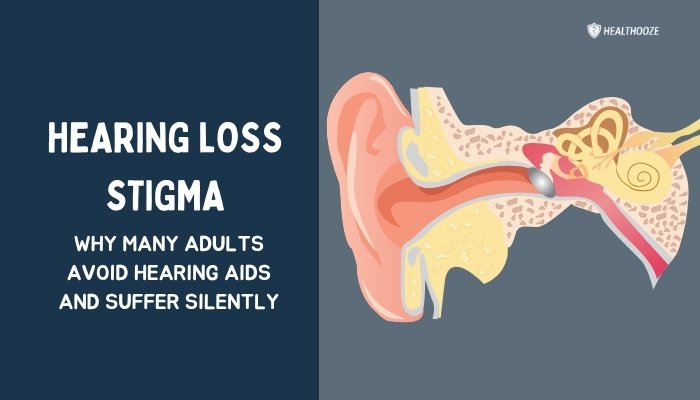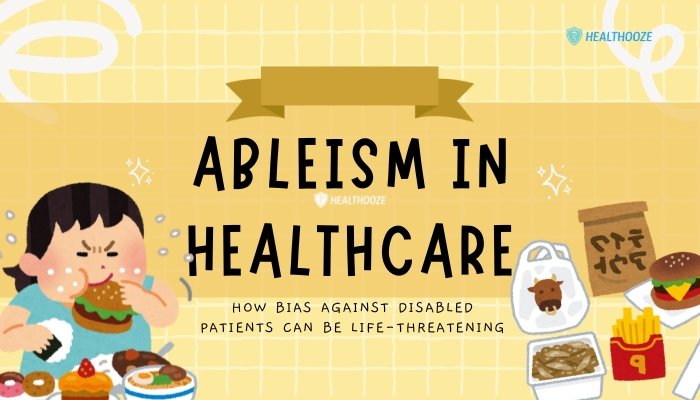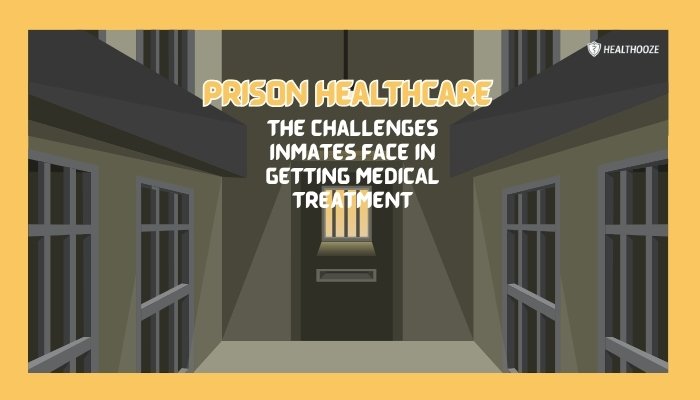Introduction
The SARS-CoV-2 virus disrupted everyday life worldwide since its emergence. While many individuals recover fully after contracting COVID-19, a significant number continue experiencing complications long after the acute infection passes. This prolonged illness is commonly known as “Long COVID,” “Post-COVID Condition,” or “Post-Acute Sequelae of SARS-CoV-2 Infection (PASC).”
Patients living with Long COVID may struggle with disabling fatigue, respiratory issues, persistent loss of taste and smell, and even organ dysfunction, among other symptoms. Despite its substantial effect on quality of life, Long COVID often remains underrecognized or misunderstood, with many sufferers struggling to find appropriate medical and social support.
This article explores the evolving understanding of Long COVID—defining its common presentations, examining possible biological mechanisms, and discussing the keys to diagnosis and care. With global awareness rising, it’s imperative that healthcare systems, employers, educators, and communities adapt to the reality that recovery from COVID-19 can be neither linear nor complete for many.
By recognizing the lingering impact of the virus, individuals and care providers can advocate for earlier interventions, better accommodations, and further research to unravel the complexities of Long COVID.
Defining Long COVID
Clinical Criteria and Naming Conventions
Though there is not a single universal definition, many health authorities define Long COVID as the persistence or development of new symptoms lasting four weeks or more after the initial COVID-19 infection. The World Health Organization (WHO) uses the term “post-COVID-19 condition” for symptoms continuing at least two months that cannot be otherwise explained. Meanwhile, other groups, like the U.S. Centers for Disease Control and Prevention (CDC), refer to ongoing or new health issues extending beyond four weeks. This variation in naming and timelines can create confusion, but the overarching principle is that individuals remain symptomatic long after the acute infectious phase.
Possible Overlap with Other Conditions
“Long COVID” can resemble other post-viral syndromes, such as those seen after Epstein-Barr virus or influenza. For instance, people with chronic fatigue syndrome/myalgic encephalomyelitis (ME/CFS) note striking similarities in their symptoms—particularly sustained fatigue, post-exertional malaise, and cognitive impairment (“brain fog”). Additionally, conditions like postural orthostatic tachycardia syndrome (POTS) or new-onset autoimmune disorders can emerge post-infection. Untangling Long COVID from overlapping issues is a key diagnostic challenge.
Major Symptoms and Presentations
Long COVID presents through diverse manifestations and can affect multiple organ systems. Severity ranges from mildly bothersome to profoundly life-altering.
Fatigue and Reduced Exercise Tolerance
- Persistent Tiredness: Many people report a heaviness or crushing exhaustion preventing normal activities.
- Post-Exertional Malaise (PEM): A hallmark of some post-viral syndromes, wherein minimal physical or mental effort leads to an intense flare-up of symptoms, often lasting days.
Respiratory and Cardiac Symptoms
- Breathlessness: Some require months to regain previous lung function, while others may develop chronic lung inflammation or scarring.
- Chest Pain or Palpitations: Indicates possible myocarditis or autonomic dysfunction. Post-COVID, arrhythmias or pericarditis can arise in individuals with no prior cardiac issues.
Neurological and Cognitive Impairments
- Brain Fog: Slowed thinking, memory lapses, or difficulty focusing hamper professional, academic, and everyday tasks.
- Headaches: Could be persistent or migrainous in character.
- Loss of Smell/Taste: Some never fully regain these senses, while others note altered or distorted tastes (parosmia).
Psychological and Emotional Well-Being
- Anxiety and Depression: Chronic symptoms, social isolation, and uncertainty about recovery contribute to mental distress.
- Sleep Disturbances: Insomnia or unrefreshing sleep further complicate daytime function.
Other Organ Systems
- Gastrointestinal Problems: Diarrhea, abdominal pain, or ongoing nausea can persist.
- Dermatological Changes: Hair loss (telogen effluvium) or new skin rashes.
- Musculoskeletal Pain: Joint aches or muscle weakness, limiting mobility.
- Menstrual Irregularities: Some report changes in menstrual cycles post-COVID, including heavier flow or increased pain.
No two Long COVID patients present identically. A previously healthy athlete might struggle to climb stairs; a busy parent might find they cannot focus on tasks or care for children as before. The unpredictable mix of symptoms emphasizes the condition’s complexity.
Who Is Most at Risk?
Early in the pandemic, some believed that only severe COVID-19 survivors or older, comorbid individuals faced lingering effects. However, evidence shows that even mild or asymptomatic infections can lead to Long COVID.
Demographic Factors
- Age: While older adults and those with underlying conditions remain at higher risk for severe acute illness, Long COVID can afflict younger individuals as well.
- Gender: Women may be more prone to Long COVID, but reasons remain unclear—possible hormonal influences, immune responses, or social factors could play a role.
- Obesity: Excess weight can elevate inflammation and stress on the body, potentially exacerbating post-infection sequelae.
Hospitalization vs. Mild Disease
Though hospitalized patients often face extended recovery, a notable portion of Long COVID patients had mild initial symptoms that did not require medical intervention. Indeed, the mismatch between mild acute infection and debilitating long-term consequences fuels some of the confusion around Long COVID.
Underlying Health Conditions
- Autoimmune Disorders: Pre-existing autoimmunity (e.g., lupus, rheumatoid arthritis) might predispose individuals to more intense immune dysregulation post-infection.
- Respiratory Disorders: Patients with asthma or COPD are more susceptible to ongoing breathing difficulties.
- High Stress or Low Access to Care: Socioeconomic barriers can delay acute COVID-19 treatment or hamper rehabilitation, increasing the likelihood of persistent complications.
Possible Mechanisms Behind Long COVID
Research into Long COVID is ongoing, with numerous theories suggesting a multifaceted pathophysiology. Rather than a single unifying cause, different biological processes may converge to produce sustained symptoms.
Viral Persistence
One hypothesis proposes that fragments of SARS-CoV-2 remain in certain tissues—such as intestinal lining or reservoirs within organs—continuing to provoke immune responses. Evidence of viral RNA in stool or post-mortem tissue samples months after infection supports this possibility.
Immune Dysregulation
- Autoimmune Activation: Overactive or misguided immune cells could attack self-tissues, producing chronic inflammation.
- Cytokine Storm Aftermath: A severe “cytokine storm” during acute illness might cause lasting tissue damage or an imprint on the immune system, leading to subclinical inflammation.
Endothelial or Vascular Damage
COVID-19’s impact on blood vessels and the clotting system can persist, causing microvascular damage. Microscopic clots or endothelial dysfunction hamper oxygen delivery, leading to fatigue, organ stress, and tissue hypoxia.
Autonomic Nervous System Involvement
Some post-COVID patients exhibit postural orthostatic tachycardia syndrome (POTS)-like features or broader autonomic dysfunction (e.g., irregular heart rate, temperature regulation issues). These changes might stem from nerve fiber injury or ongoing inflammation.
Viral Trigger for Other Conditions
In certain patients, a latent predisposition to conditions like ME/CFS may be “unmasked” by COVID-19. The infection becomes a tipping point that reveals a vulnerability to chronic illness.
Diagnosing Long COVID
No single test conclusively diagnoses Long COVID. Instead, physicians rely on a combination of clinical evaluation, patient history, and exclusion of alternative explanations.
Key Components of Diagnosis
- History of SARS-CoV-2 Infection
- Laboratory-confirmed infection (PCR, antigen, or antibody testing) or strong clinical suspicion during the pandemic timeline.
- Persistent Symptoms
- Typically present at least 4–12 weeks post-infection, continuing or recurring for months.
- Symptom Clusters
- Fatigue, breathlessness, cognitive impairment, and more, not explained by other conditions.
- Normal or Non-Specific Test Results
- Blood tests, imaging, and standard cardiopulmonary evaluations may show normal or subtle abnormalities, complicating recognition.
Ruling Out Other Causes
Patients undergo thorough workups to exclude organ-specific diseases (e.g., advanced heart failure, new-onset diabetes, unrecognized thyroid disease). Even so, subtle changes—like reduced lung diffusion capacity or mild myocarditis signs on MRI—may support a post-COVID diagnosis.
Integrated Care Approach
Due to Long COVID’s multi-system nature, patients often see diverse specialists—pulmonologists, cardiologists, neurologists, rheumatologists, and mental health professionals. Coordinated care ensures that each relevant domain is evaluated, treatments are aligned, and duplicative testing is avoided.
Managing Long COVID: Strategies and Recommendations
While no standard cure exists for Long COVID, symptom-based interventions and rehabilitation can improve quality of life. A personalized approach—acknowledging each patient’s unique combination of issues—is crucial.
Medical Therapies
- Medication Adjustments
- Inhaled bronchodilators or steroids for lingering respiratory inflammation.
- Short-term or rotating pain management strategies for headaches or joint/muscle pain.
- Antidepressants or anxiolytics if severe anxiety/depression arises.
- Treating Specific Organ Damage
- Heart failure therapies, blood thinners if microclots are suspected, or medications for POTS-like symptoms (e.g., beta-blockers).
- Immunosuppressants or Immunomodulators
- Investigational in some post-viral contexts, but potential side effects necessitate caution.
Rehabilitation and Self-Management
- Pacing and Energy Conservation
- Avoid “push-crash” cycles. Gradually reintroduce physical activities, respecting limitations.
- Frequent rest intervals, delegation, or modifications at work/school.
- Physical Therapy
- Low-impact exercises (yoga, swimming, gentle stretching) tailored to patient tolerance.
- Rehab might incorporate recumbent biking or progressive treadmill walking under supervision.
- Cognitive Rehabilitation
- Memory aids, structured routines, and “brain exercises” for those with significant brain fog.
- Occupational therapy or speech-language pathologists can assist with cognition-based tasks.
- Mental Health Support
- Counseling or mindfulness-based therapies reduce distress.
- Peer support groups for shared experiences and coping strategies.
Lifestyle and Coping
- Dietary and Hydration: Balanced nutrition, adequate fluids, and attention to electrolyte intake can bolster energy levels.
- Stress Management: Relaxation techniques—breathing exercises, guided imagery, gentle hobbies—decrease sympathetic overdrive.
- Sleep Hygiene: Maintaining consistent schedules, limiting caffeine, and ensuring an environment conducive to restorative sleep.
Societal and Economic Impact
Long COVID is not just a personal health issue; it also has far-reaching societal repercussions. People struggling with chronic symptoms may need extended sick leave, flexible work arrangements, or new disability provisions. Students might require academic accommodations. Medical systems must scale up post-COVID clinics and resources, while researchers scramble to clarify how COVID-19 transitions into a prolonged syndrome.
Workforce Challenges
- Reduced Productivity: Chronic fatigue and poor concentration can lower work performance.
- Job Insecurity: Workers on repeated sick leave risk losing positions or missing promotions.
- Remote Work: While an option for some roles, others (e.g., frontline retail, hospitality) cannot shift to fully remote tasks.
Healthcare System Strain
- Long COVID Clinics: Specialized centers offering multidisciplinary care are emerging to address complex post-COVID needs.
- Insurance and Coverage: Ongoing treatments, rehab sessions, or mental health support can be costly. Policymakers and payers must adapt to cover extended post-COVID care.
Economic Costs
- Lost Wages: Prolonged recovery time or partial disability affects household finances and consumer spending.
- Increased Public Health Expenditure: Government-funded clinics, research, and disability benefits further strain healthcare budgets.
Children and Adolescents with Long COVID
Although children generally face lower acute COVID-19 risks, some do develop persistent post-infection symptoms. They may present with:
- Unexplained Fatigue: Struggling to keep up with peers in school or sports.
- Difficulty Concentrating: Leading to academic declines or need for extra tutoring.
- Possible Cardiac/Pulmonary Issues: Rare but documented, including chest pain, shortness of breath.
Pediatricians and parents should watch for these signs, especially after a confirmed or suspected COVID-19 illness. Early detection and mild rehabilitative strategies can shorten the disruption to learning and social development.
Emerging Research Directions
Scientists worldwide race to decode Long COVID’s biological underpinnings. Collaborative networks analyzing large patient cohorts (including “long hauler” groups) provide a wealth of data.
Key Focus Areas
- Identifying Biomarkers
- Lab tests or imaging markers that conclusively indicate ongoing SARS-CoV-2 effects.
- Potential for guiding targeted therapies or risk stratification.
- Immunological Profiling
- In-depth studies of T-cells, B-cells, and autoantibodies in long-hauler samples.
- Could lead to immune-modulating drugs if autoimmunity is proven.
- Neuroinflammation
- Brain MRI scans, cerebral spinal fluid analysis to map persistent neural inflammation or microvascular changes.
- Clinical Trials
- Testing antivirals, anti-inflammatory agents, or rehab interventions specifically for Long COVID.
- Evaluating how vaccine boosters or repeated infections affect long-term outcomes.
The Role of Patient Advocacy
Patient-led groups, many formed during the pandemic, significantly contribute to shaping research priorities. Their crowd-sourced experiences highlight common patterns, revealing potential solutions or pointing to neglected aspects of care. Many researchers now work directly with these communities, fostering a collaborative approach that merges clinical expertise with real-world insights.
Practical Takeaways
- Early Recognition: Anyone with persistent symptoms following COVID-19—particularly lasting longer than four weeks—should consult a healthcare professional about possible Long COVID. Early intervention may help mitigate complications.
- Comprehensive Assessment: A thorough review of organ systems, mental health, and daily functioning ensures appropriate referrals.
- Symptom Management: There is no one-size-fits-all therapy. Treatment requires an individualized mix of medications, physical therapy, pacing, and psychosocial support.
- Lifestyle Adjustments: Balanced diet, adequate rest, hydration, mild activities suited to tolerance, and stress reduction can improve daily coping.
- Stay Updated: COVID-19 science evolves quickly. Guidelines and knowledge about Long COVID continue to expand.
Table: Common Long COVID Symptoms and Possible Management Approaches
| Symptom | Description | Management Strategies |
| Fatigue / Low Energy | Persistent tiredness unrelated to rest | Gradual pacing, structured rest, mild exercise (under medical guidance) |
| Breathlessness | Difficulty breathing, especially on exertion | Pulmonary rehab, breathing techniques, inhalers (if bronchospasm is detected) |
| Brain Fog / Cognitive Issues | Memory lapses, trouble focusing, confusion | Cognitive therapy, scheduling tasks in small blocks, memory aids |
| Chest Pain / Palpitations | Sensation of pressure or rapid heartbeat | Cardiac evaluation, beta-blockers, stress management |
| Loss of Taste / Smell | Partial or full anosmia, altered taste (dysgeusia) | Olfactory retraining exercises, nutritional guidance for balanced intake |
| Headaches | Tension-like or migrainous | Hydration, analgesics, neurology consult if severe or persistent |
| GI Upset | Abdominal pain, diarrhea, altered appetite | Dietary adjustments, probiotics, GI motility agents if indicated |
| Anxiety / Depression | Emotional distress from chronic illness | Counseling, peer support groups, SSRIs/SNRIs under psychiatric guidance |
Conclusion
Long COVID extends the pandemic’s footprint for millions worldwide, reminding us that recovery from COVID-19 is not always a quick or predictable path. Sufferers of Long COVID deserve acknowledgment, comprehensive healthcare, and societal support akin to any complex chronic condition. Multi-disciplinary teams—spanning cardiology, pulmonology, neurology, rehabilitation, and mental health—are critical for tackling the array of symptoms and restoring a semblance of pre-infection life. Meanwhile, ongoing research into the mechanisms behind prolonged symptoms should yield more targeted treatments and early detection tools.
Facing the evolving landscape of SARS-CoV-2 and its long-term sequelae demands proactive policies—expanded rehabilitation programs, workplace accommodations, and an inclusive approach to insurance coverage. By raising awareness of Long COVID, validating patients’ experiences, and investing in science-driven solutions, we can better equip individuals and communities to navigate the lingering aftermath of the COVID-19 crisis.
References
- National Institutes of Health (NIH). Post-Acute Sequelae of SARS-CoV-2 Infection (PASC). 2021.
- World Health Organization (WHO). A clinical case definition of post COVID-19 condition by a Delphi consensus. 2021.
- Davis HE, Assaf GS, McCorkell L, et al. Characterizing Long COVID in an international cohort: 7 months of symptoms and their impact. EClinicalMedicine. 2021;38:101019.
- Sudre CH, Murray B, Varsavsky T, et al. Attributes and predictors of Long-COVID. Nat Med. 2021;27(4):626–631.
- Fogarty H, Townsend L, Ni Cheallaigh C, et al. Persistent endotheliopathy in the pathogenesis of long COVID syndrome. J Thromb Haemost. 2021;19(10):2546–2553.
- Arnold DT, Milne A, Samms E, et al. Symptoms of post-COVID-19 syndrome in healthcare workers. Occup Med. 2021;71(2):82–87.
- Al-Aly Z, Bowe B, Xie Y. Long COVID after breakthrough SARS-CoV-2 infection. Nat Med. 2022;28(7):1461–1467.
- Lopez-Leon S, Wegman-Ostrosky T, Perelman C, et al. More than 50 long-term effects of COVID-19: a systematic review and meta-analysis. Sci Rep. 2021;11(1):16144.
- Townsend L, Dyer AH, Jones K, et al. Persistent fatigue following SARS-CoV-2 infection is common and independent of severity of initial infection. PLoS One. 2020;15(11):e0240784.
- Blomberg B, Mohn KG, Brokstad KA, et al. Long COVID in a prospective cohort of home-isolated patients. Nat Med. 2021;27(9):1607–1613.
- Nalbandian A, Sehgal K, Gupta A, et al. Post-acute COVID-19 syndrome. Nat Med. 2021;27(4):601–615.
- Centers for Disease Control and Prevention (CDC). Post-COVID Conditions: Information for Healthcare Providers. 2022.

